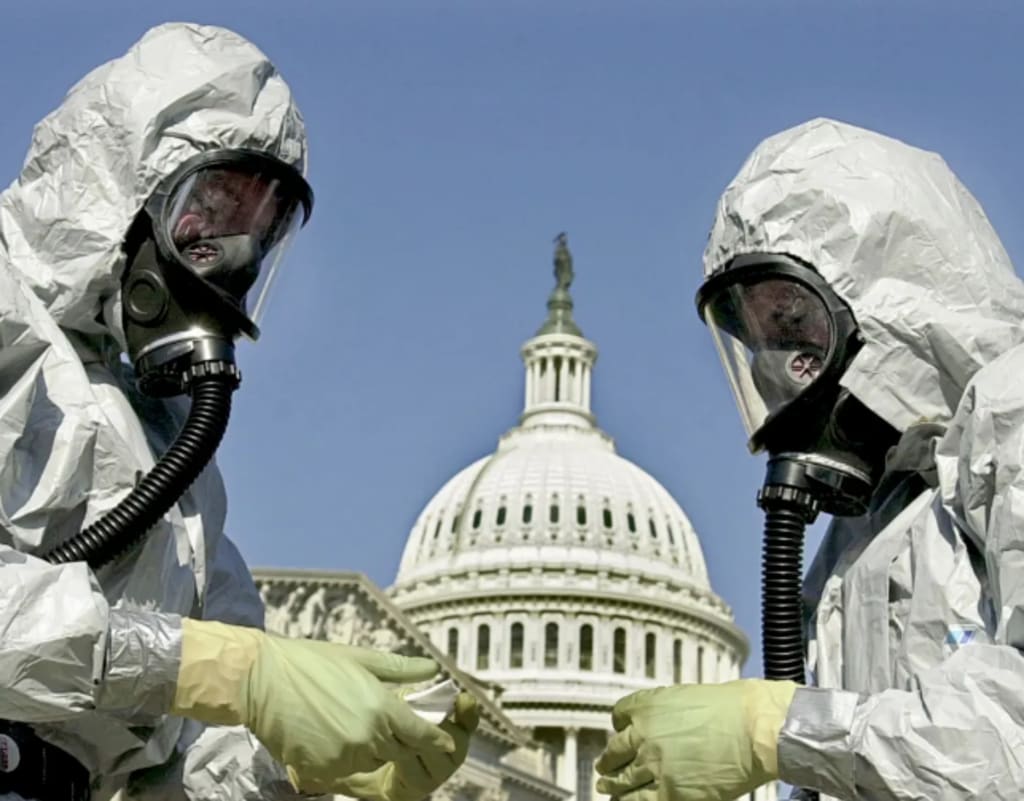The Anthrax Attacks: A Tale of Terror, Resilience, and Triump
In the aftermath of September 11, 2001, America faced another wave of fear as anthrax-laden letters began appearing in mailboxes. This invisible threat targeted media outlets and U.S. Senators, resulting in five deaths and 17 infections. The anthrax attacks highlighted the nation's vulnerability to bioterrorism and set off one of the largest and most complex investigations in U.S. history. This story of terror is also one of remarkable resilience and determination, showcasing the relentless pursuit of justice by law enforcement and the scientific community.

In the weeks following the devastating events of September 11, 2001, America was thrust into another wave of terror—the anthrax attacks. Letters laced with deadly anthrax spores were sent to various news media offices and two U.S. Senators, killing five people and infecting 17 others. This bioterrorism attack not only spread fear across the nation but also highlighted the resilience and determination of those who sought to bring the perpetrators to justice. This article delves into the details of the anthrax attacks, the response, and the inspiring story of resilience and triumph that emerged from this dark chapter in American history.
The Unfolding of Terror
On September 18, 2001, the first anthrax-laden letters were mailed, targeting media outlets such as ABC, CBS, NBC, the New York Post, and the National Enquirer. A second wave of letters was sent on October 9, 2001, to Senators Tom Daschle and Patrick Leahy. These letters contained a highly refined and deadly form of anthrax powder, capable of causing severe illness and death.
The victims of these attacks included postal workers, journalists, and innocent civilians who came into contact with the contaminated letters. The initial symptoms of anthrax infection resembled the flu, making it difficult to diagnose early. As the disease progressed, it caused severe respiratory issues and, in many cases, death. The nation was gripped by fear as the mysterious attacks unfolded, and the threat of bioterrorism became a stark reality.
The Response
The anthrax attacks prompted an immediate and intense response from federal agencies, including the FBI, CDC, and the United States Postal Service. The investigation, dubbed "Amerithrax," became one of the largest and most complex in U.S. history. The primary objectives were to identify the source of the anthrax, track down the perpetrator(s), and prevent further attacks.
The scientific community also played a crucial role in the investigation. Scientists worked tirelessly to analyze the anthrax spores, tracing their origins and attempting to identify the specific strain used in the attacks. Advanced techniques in genetic analysis and microbiology were employed, showcasing the power of science in combating bioterrorism.
The Breakthrough
For several years, the Amerithrax investigation faced numerous challenges and false leads. The complexity of the case and the sophisticated nature of the anthrax used made it difficult to pinpoint the source. However, a significant breakthrough came in 2008 when the investigation focused on Dr. Bruce Ivins, a microbiologist at the United States Army Medical Research Institute of Infectious Diseases (USAMRIID).
Dr. Ivins had been working on anthrax vaccines and had access to the same strain of anthrax used in the attacks. The FBI's investigation revealed a series of suspicious behaviors and circumstantial evidence linking him to the crime. Before he could be formally charged, Dr. Ivins committed suicide in July 2008, leaving many questions unanswered but bringing a sense of closure to the case.
Resilience and Recovery
The anthrax attacks left a profound impact on the victims and their families, as well as on the nation as a whole. Despite the fear and uncertainty, the resilience displayed by the American people and the determination of law enforcement and scientific communities were truly inspiring.
The attacks led to significant changes in how the United States handles bioterrorism threats. The establishment of the Department of Homeland Security and the expansion of the CDC's capabilities to deal with biological threats were direct responses to the attacks. Additionally, there was a renewed emphasis on developing better detection methods, vaccines, and treatments for anthrax and other potential bioterrorism agents.
Lessons Learned and Legacy
The anthrax attacks of 2001 highlighted the vulnerability of modern societies to bioterrorism and the need for robust preparedness measures. The case also underscored the importance of collaboration between law enforcement, scientific communities, and public health organizations. The ability to rapidly identify, respond to, and mitigate bioterrorism threats became a national priority.
Furthermore, the Amerithrax investigation showcased the power of perseverance and the relentless pursuit of justice. Despite numerous obstacles, the determination of investigators to uncover the truth and bring the perpetrator to justice remained unwavering. This commitment serves as an inspiring reminder of the resilience and strength of the human spirit in the face of adversity.
To conlude, the anthrax attacks of 2001 were a stark reminder of the potential for bioterrorism to cause widespread fear and harm. However, the response to these attacks also highlighted the resilience and determination of those who worked tirelessly to protect the nation and bring the perpetrators to justice. The lessons learned from this dark chapter in history have led to significant advancements in bioterrorism preparedness and response, ensuring that we are better equipped to face similar threats in the future.
The story of the anthrax attacks is one of terror, but also one of tenacity and triumph. It underscores the importance of vigilance, preparedness, and the enduring human spirit in overcoming the challenges posed by those who seek to inflict harm. As we remember the victims and honor the heroes of this tragic event, we are reminded that even in the face of the most insidious threats, resilience and justice can and will prevail.
About the Creator
Jane Doe
As a passionate storyteller, I captivate readers with engaging, well-researched articles across genres from criminality and poems to lifestyle and more....
Join me for insights, tips, and narratives that inform and entertain.
Enjoyed the story? Support the Creator.
Subscribe for free to receive all their stories in your feed. You could also pledge your support or give them a one-off tip, letting them know you appreciate their work.






Comments
There are no comments for this story
Be the first to respond and start the conversation.